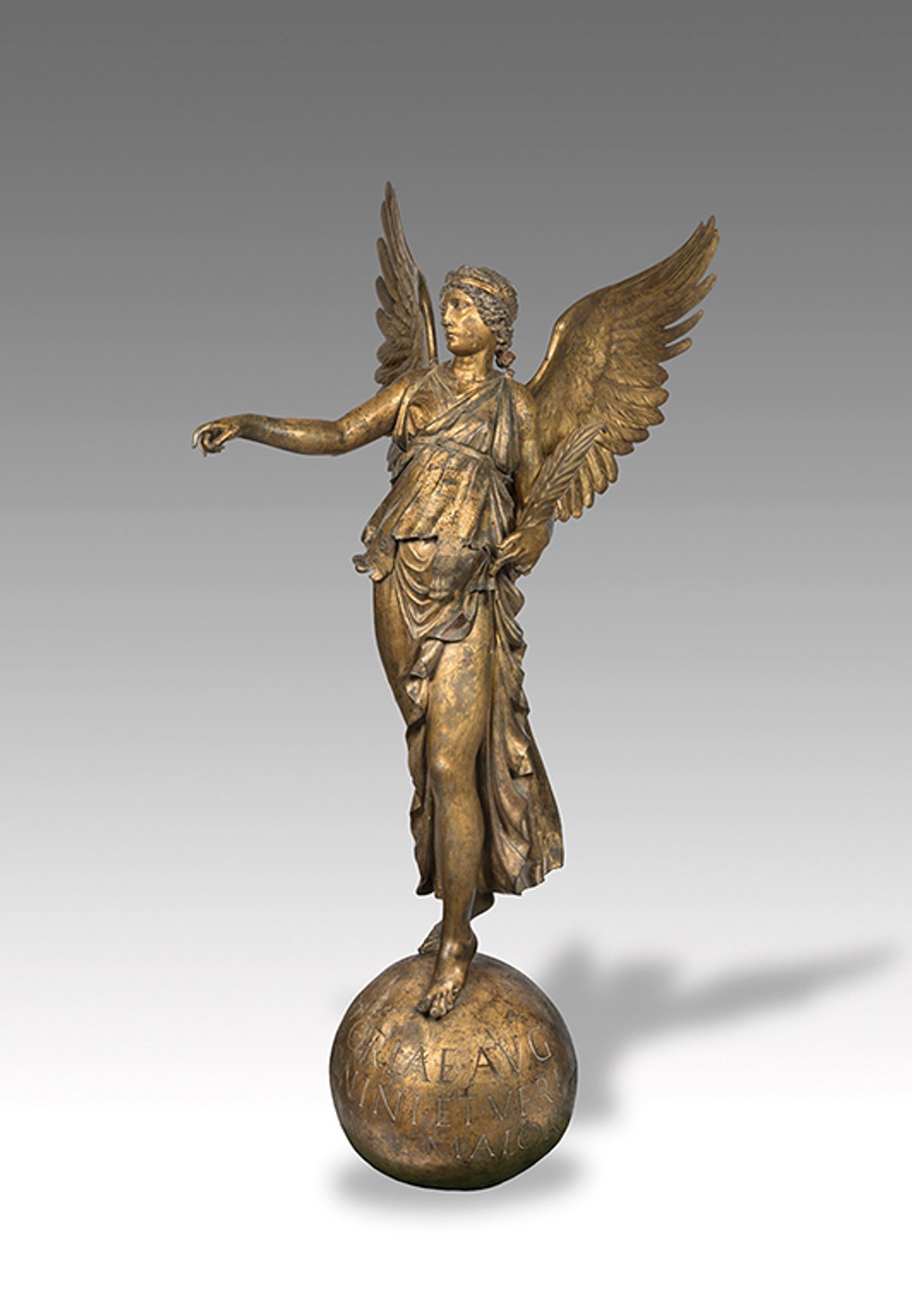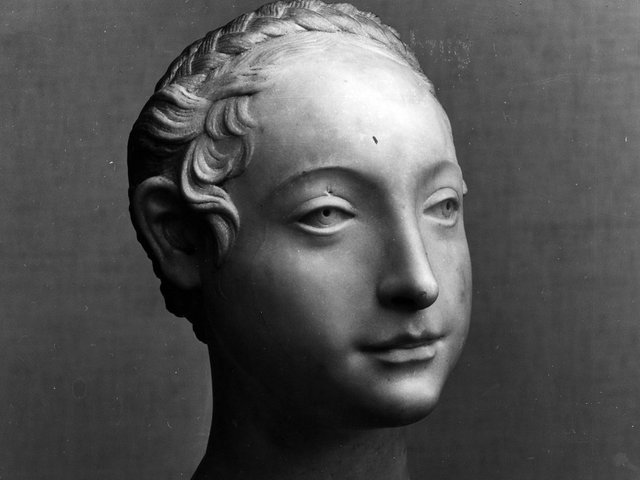To say that the goddess of victory deserted Germany at the end of the Second World War is more than a metaphor–she really did leave.
The gilded bronze, almost life-size Roman sculpture known as Victoria of Calvatone was among the most important statues in Berlin’s antiquities collection before the war. In 1946, it went missing, one of 2.5 million German museum pieces looted by Joseph Stalin’s trophy brigades and shipped to the Soviet Union. It didn’t reappear until 2015.
“We didn’t know if it still existed,” says Martin Maischberger, the deputy director of Berlin’s Antikensammlung, or Antiquities Collection, housed in the Altes Museum. “It had been lost since 1946. We thought it might have gone to Moscow.”
The sculpture was, in fact, in St. Petersburg. Victoria had somehow mistakenly been stored in a section of the Hermitage depot reserved for French Baroque art. After careful restoration, the work is being exhibited again for the first time in 80 years at an exhibition that opened at the Hermitage on 7 December.
Stalin’s war booty remains a sticking-point in German-Russian diplomatic relations. After the Second World War, eastern German museums were left with almost nothing. In an act of friendship to Communist East Germany in 1958, 300 train carriages sent from Moscow and St. Petersburg returned many of the missing treasures, including the Pergamon Altar. But about one million objects, including the Victoria sculpture, never returned.
Chancellor Angela Merkel made clear at the 2013 opening of an exhibition at the Hermitage showing Bronze Age treasures looted from Germany that she would like to have the remaining treasures back. But Russia has rebuffed such demands, viewing the booty as legitimate compensation for Soviet heritage looted or destroyed by German troops. Under Russian law, the art taken from Germany by the trophy brigades is Russian state property.
No resolution to the political stalemate is in view. But at the museum level, German and Russian curators, researchers and restorers are collaborating across a range of subjects to share research and prepare exhibitions–both on objects looted from Germany and on Russian heritage destroyed in the Second World War.
Berlin’s Antikensammlung and the Hermitage have cooperated on the Victoria sculpture since 2016. The Hermitage funded the statue’s restoration while the Berlin team contributed research from its own archives into the provenance of the sculpture. Next year, a scholarly colloquium and joint publication are planned.
Far fewer Roman bronzes have survived than marble sculptures because they can be melted down and reused. The Victoria sculpture was the most important of the half-dozen or so in the Berlin antiquities collection because it was plated in gold and could be very closely dated to AD160, Maischberger says.
It was found just a few centimetres under the soil by peasants working the land near Cremona in northern Italy in 1836. Purchased by the Berlin museum authorities, the sculpture arrived in the city in 1842. It was there for more than a century and survived war-time bombing in a vault under the city mint.
Among the surprise findings of the German-Russian research is the fact that the sculpture’s wings are relatively new. Russian researchers using an endoscope found the date 1844 engraved inside–evidence that they were added after its arrival in Berlin. The researchers also discovered that part of a missing arm and leg had been replaced, almost imperceptibly. “There was a different restoration ethos in the 19th century,” Maischberger says. “Today we believe that if we restore missing pieces, we should make it as minimally invasive as possible and a reversible as possible.”
The Hermitage restorers decided that the 19th-century wings–at 20 kilograms each–were too heavy for the sculpture, so they have replaced them with lighter copies. Another puzzle for the scholars is her clothing–this Victoria wears a bearskin, an outfit that Maischberger says is incongruous for the goddess of victory. She may have originally been intended to represent a different goddess entirely, he says.
Given the differing legal perspectives on where she rightfully belongs, it is unlikely that Victoria will be exhibited in Berlin in the near future. But there is one consolation. Before the sculpture disappeared, the Berlin museums’ plaster cast workshop produced a plaster replica, which is still on view in the Altes Museum.



